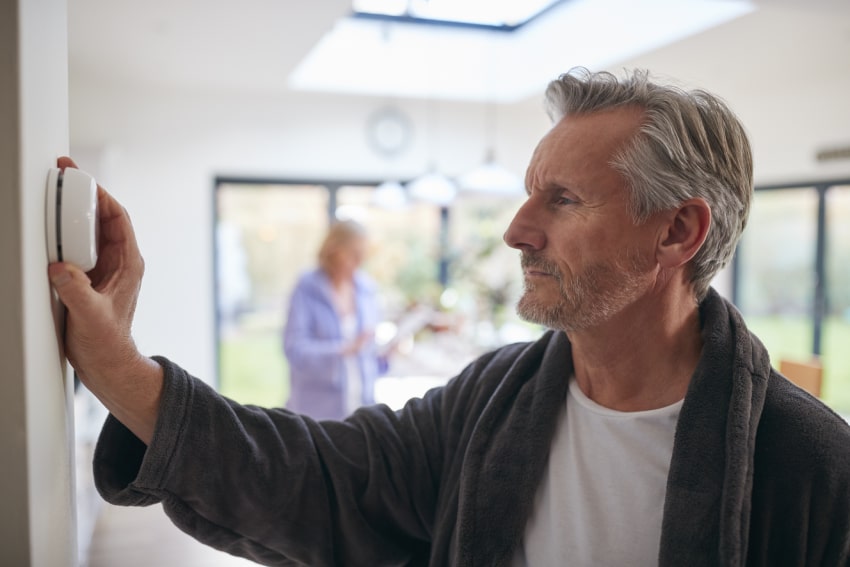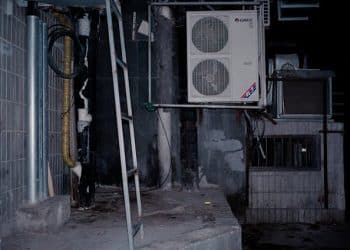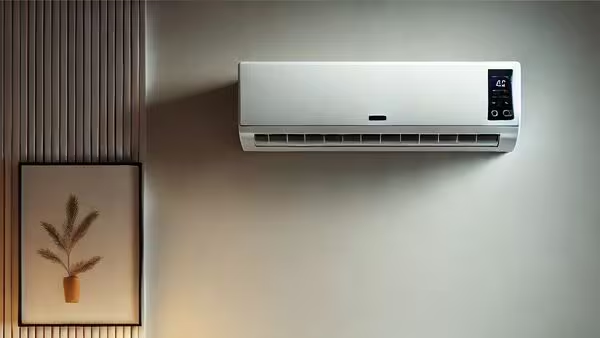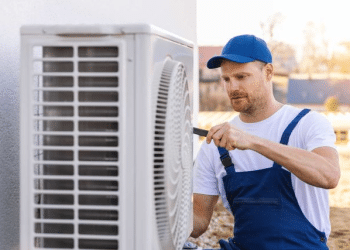Table of Contents
Your thermostats may be a small, unassuming device on your wall, but they hold the power to make or break your home’s comfort levels. When they’re working correctly, they keep you cozy in the winter and cool in the summer.
However, when thermostat problems arise, it can quickly turn into a source of frustration. From mysterious temperature fluctuations to unresponsive controls, these issues can disrupt your daily life. Fortunately, we’re here to guide you through eight common thermostat problems and arm you with the knowledge to troubleshoot and solve them effectively.
1. Thermostat Not Turning On
To ensure the proper functioning of your heating and cooling system, it’s crucial to address any issues with your Johnson Controls thermostats promptly. When your thermostat fails to turn on, it can lead to discomfort and potential heating or cooling issues in your home. This problem may be caused by a variety of factors, such as dead batteries, a tripped circuit breaker, or loose wiring connections.
Solution: To resolve this issue, start by checking if the thermostat has working batteries or replace them if needed. Next, inspect your circuit breaker panel to see if the breaker connected to your HVAC system is in the “on” position. If it’s off, reset it. Additionally, make sure the wiring connections at the thermostat and HVAC unit are secure and properly connected.
2. Incorrect Temperature Reading
Don’t let an incorrect temperature reading on your thermostat cause discomfort and inefficient heating or cooling when Danfoss thermostats can provide accurate readings. Common reasons for this issue include placement problems, calibration issues, or sensor malfunctions.
Solution: Begin by ensuring that your thermostat is not placed near drafts, heat sources, or direct sunlight, as these factors can affect its temperature readings. Next, consider recalibrating your thermostat according to the manufacturer’s instructions to improve accuracy. If the problem persists, it may be necessary to replace the thermostat’s temperature sensor or contact a professional technician to diagnose and address the issue.
3. Thermostat Not Communicating with HVAC System
When your Danfoss thermostats fail to communicate with your HVAC system, you may experience heating or cooling problems as they cannot control the equipment effectively. This issue could be caused by issues with wiring, a malfunctioning Danfoss thermostat, or a faulty HVAC system.
Solution: Start by checking the thermostat’s display to see if it’s powered on and set to the correct mode (heating or cooling). Ensure that the wiring connections at both the thermostat and the HVAC unit are secure and properly connected. If the problem persists, it may be necessary to consult an HVAC technician to diagnose the issue, as it could be related to a malfunctioning thermostat or a problem within the HVAC system itself.
4. Thermostat Keeps Turning On and Off
A thermostat that frequently cycles on and off, a phenomenon known as short cycling, can lead to increased wear and tear on your HVAC system and reduced energy efficiency. This problem can occur due to issues with the thermostat settings, sensor placement, or system sizing.
Solution: First, check if the thermostat’s temperature differential settings are appropriate. Adjust them if necessary to allow for a longer runtime between cycles. Make sure the thermostat is located in a suitable position away from heat sources or drafts that might cause rapid temperature fluctuations. If the problem continues, it may be related to an oversized HVAC system, which will require professional evaluation and potentially system replacement to address the short cycling issue.
5. Thermostat Blowing Hot or Cold Air Intermittently
Intermittent temperature fluctuations where the thermostat alternates between blowing hot and cold air can create an uncomfortable indoor environment. This issue often occurs due to problems with the thermostat settings, dirty filters, or issues with the HVAC system.
Solution: Start by checking and replacing the air filters in your HVAC system regularly to ensure proper airflow. If the problem persists, review your thermostat settings, particularly the fan mode. Ensure it’s set to “Auto” rather than “On” to prevent the fan from running continuously. Additionally, check if your thermostat’s anticipator settings are correctly calibrated to avoid temperature swings. If these solutions don’t work, consult an HVAC technician to diagnose and address any underlying issues with the system.
6. Inaccurate Temperature Control
When your thermostat struggles to maintain the desired temperature, it can lead to discomfort and energy wastage. Inaccurate temperature control can be caused by thermostat calibration problems, sensor issues, or system malfunctions.
Solution: Begin by recalibrating your thermostat to ensure it accurately reflects the room temperature. Consult the manufacturer’s instructions for guidance on this process. Additionally, verify that the thermostat’s sensor is clean and not obstructed by any objects. If the problem persists, it may be necessary to contact a professional HVAC technician to assess the system, as it could be suffering from issues like a malfunctioning sensor or a faulty control board that require expert attention.
7. Thermostat Wiring Issues
Wiring problems with your thermostat can lead to malfunctioning heating or cooling systems. These issues may manifest as erratic temperature control, failure to turn on, or incorrect system operation. Common wiring problems include loose connections, damaged wires, or mislabeled wires.
Solution: Start by carefully inspecting the wiring connections at both the thermostat and the HVAC system. Tighten any loose connections and replace any damaged wires. Ensure that the wires are correctly labeled and connected to the appropriate terminals on the thermostat. If you are uncertain about the wiring or if the problem persists, consider consulting an HVAC technician who can diagnose and resolve any complex wiring issues.
8. Battery or Power Problems
If your thermostat relies on batteries or has power supply issues, it can lead to intermittent operation or a complete shutdown. Dead or weak batteries, electrical problems, or issues with the power source can be responsible for this problem.
Solution: For battery-operated thermostats, replace the batteries with fresh ones to ensure proper power supply. If your thermostat is hardwired, check the electrical connections and circuit breakers to ensure they are functioning correctly. Make sure the power source to the thermostat is not interrupted. If you continue to experience power-related problems, consult an electrician to address any electrical issues or a professional HVAC technician to assess and potentially replace the thermostat if it’s faulty.
Conclusion
While thermostats may seem like simple devices, they play a crucial role in maintaining comfort and energy efficiency in our homes. Understanding and addressing common thermostat problems can save you time, money, and frustration. Whether it’s a simple battery replacement, recalibration, or troubleshooting a faulty connection, tackling these issues head-on will ensure your thermostat, including IO HVAC Controls thermostats, continues to keep your home at the perfect temperature. So, don’t let thermostat problems leave you in the cold or overheated – with the right knowledge and a little DIY spirit, you can keep your home’s climate control in tip-top shape.








